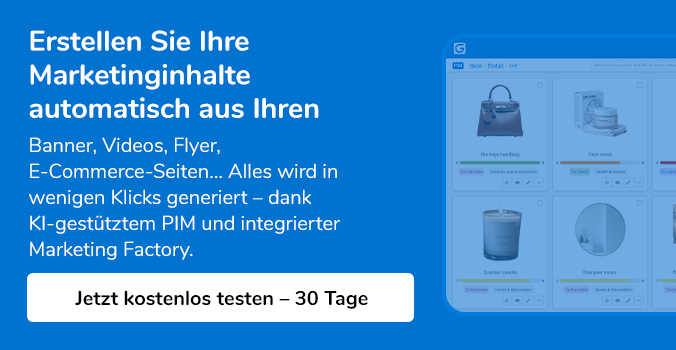Product returns have an influence on the overall shopping experience according to 80% of the consumers1 questioned.
For an eCommerce business this makes it important to continually optimize the product returns process to make it practical, respectful of the environment, quick and easy…
Check out our 5 essential tips for optimizing your product returns process and improving customer satisfaction.
#1. Provide a detailed product returns policy
It is essential to word your returns policy well. It has become the 3rd purchasing criteria2 on the web just behind price and delivery options and 68% of shoppers3 read the returns policy before buying.
You need to pay attention to the wording you use. You should include essential information4: type of products eligible, time limits, conditions… and clearly lay out the process to follow for returning a product: connect to the online portal, select products to return, print return label…
It is also best to provide free product returns: : 90% of shoppers2 consider this to be very important and 80% of online shoppers2 demand it when returning a product.
A well written returns policy is essential: 67% of shoppers5 abandon their cart if it is not crystal clear.
#2. Choose eco-responsible transport options
As eCommerce develops, returning products has become « the new normal5 » with 25% of shoppers5 returning between 5 and 15% of the products they buy online.
But these returns have a heavy ecological impact: multiplication of packaging, pollution generated by transport, waste… Last mile delivery is responsible for 25%6 of greenhouse gasses and 20%6 of urban road traffic.

To avoid these impacts, you should encourage shoppers to return products through a store or a pick-up point. You should also prefer eco-responsible7 transport options (bicycle, electric van, carsharing…) and ensure that your transport providers are committed to reducing CO2 emissions.
These efforts are inescapable as 75%6 of shoppers intend to buy more from brands providing eco-responsible product returns options and 71%6 are prepared to pay more for these brands.
#3. Be fully transparent
When a shopper returns a product, they expect a brand to communicate information1 on the status of their package. They also want to be informed as quickly as possible about how soon they will be reimbursed: 58 % of shoppers9 want to be sure of the timing of reimbursements before making a new purchase.
This makes it important for eCommerce businesses to provide a « real time » package monitoring system. This system sends email and/or text notifications to the shopper at each stage of their returns process: drop-off, delivery, reimbursement…
You also need to give shoppers several options for contacting your business (phone, email, chat…) and/or to provide a dedicated portal4 for managing returns automatically: 60% of shoppers10 would appreciate this option.
#4. Simplify the returns procedure
Shoppers expect returns procedures to be quick and easy: 77% of those10 questioned will only order a product if this is the case.
One way of satisfying this demand, according to 74% of shoppers10 is to provide a pre‑completed return label. You also need to provide varied and practical options10 for product pick-up or drop-off: local pick-up points, mailbox return, home pick-up…

Simplifying the product returns process is essential to satisfy shopper demands: 92%11 are more likely to repeat order if this process is easy and 49% consider it to be an important part of their shopping experience.
#5. Improve the quality of your product information
428 billion dollars'6 worth of products were returned by shoppers in 2020. Some of the main reasons for these returns: incorrect and/or incomplete product descriptions, poor quality product photos, unclear technical features…
For eCommerce businesses, managing product returns can be a real pain6 (sending a replacement product, returning the product to the warehouse, checking the returned product…) and 57% of businesses6 say that it has negative impacts on their business: high transport costs, additional manpower, dispute management…
To avoid this, it is important to reduce the number of products being returned by providing shoppers with key information on the products they are researching: compelling product descriptions, high resolution product photos, detailed technical features… you must also ensure that this information is always consistent, up to date and comprehensive on all selling channels.
The only way to manage this information efficiently is to use a PIM (Product Information Management) solution. PIM guarantees the quality and consistency of the information provided to customers and reduces the risk of product returns. By using PIM, eCommerce businesses can reduce product returns by up to 23%.
1
Batchelor, B. (2022, November 21). How To Optimize Your E-Commerce Returns. Forbes.
2
Chaudy, M. (2019, June 11). Les retours produits, un défi à relever pour optimiser l'expérience client. Bpifrance
3
Combe, A. (2018, December 31). Retours produit : statistiques et tendances 2018. SaleCycle.
4
Politique de retour e-commerce : gérer intelligemment les échanges et les retours. (2021, December 9). Shopify
5
E-Commerce Nation. (2022, December 14). Gestion des retours : comment organiser son e-commerce ?
6
Dopson, E. (2021, August 25). The Plague of Ecommerce Return Rates and How to Maintain Profitability. Shopify.
7
France, F. (2022, December 22). Simplifier les retours colis, un enjeu capital pour le e-commerce. Forbes France.
8
Deluzarche, C. (2020, February 11). Le fléau écologique des retours colis. Maddyness
9
Heuvel, R. V. D. (2022, May 4). [Tribune] E-commerce : comment gérer au mieux les flux de renvois de colis ? Ecommercemag
10
Chaudy, M. SAV & gestion des retours e-commerce : 6 techniques pour être efficace en 2023. Wizishop
11
Comarketing-News. (2023, January 2). E-commerce : comment gérer le pic des retours après les fêtes.







